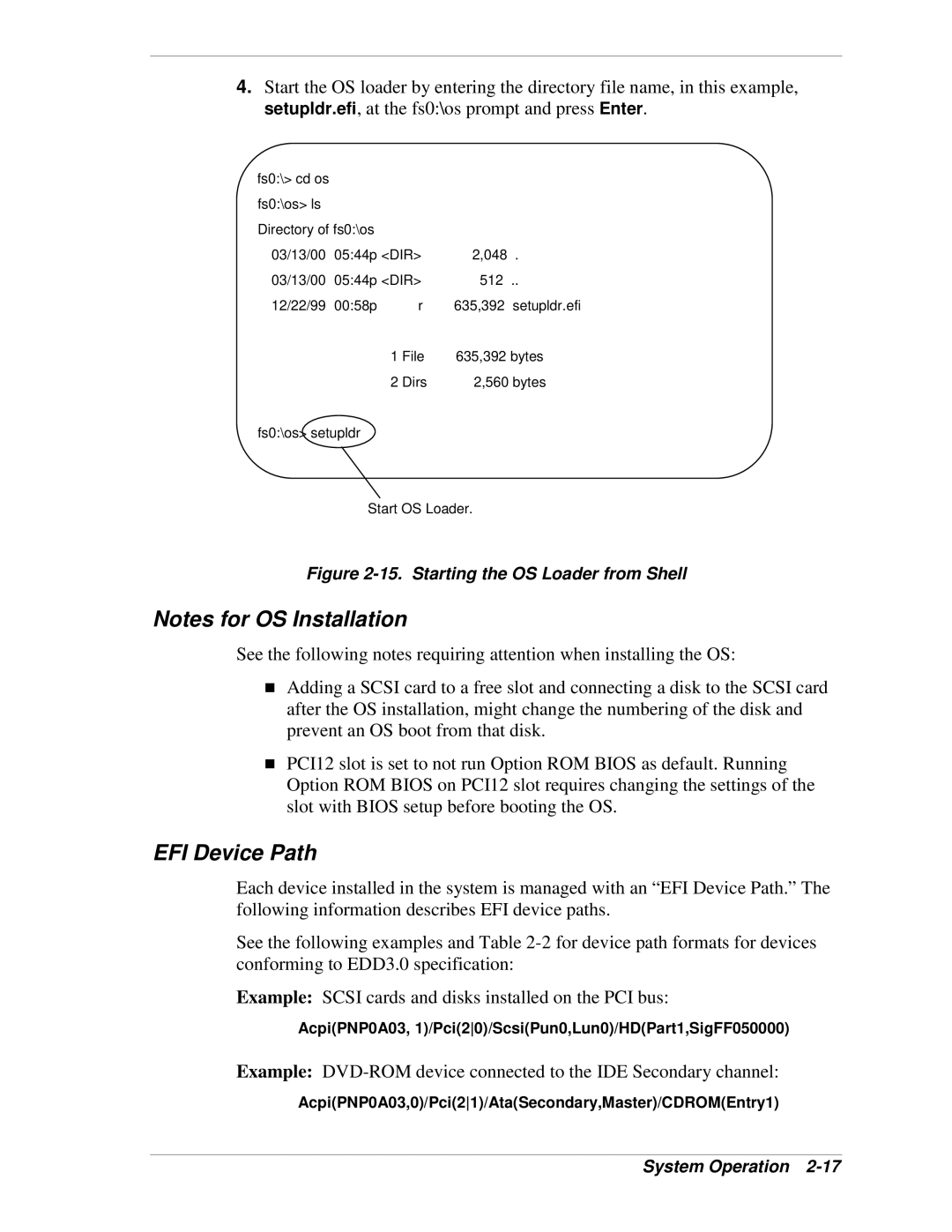
4.Start the OS loader by entering the directory file name, in this example, setupldr.efi, at the fs0:\os prompt and press Enter.
fs0:\> cd os |
|
|
|
fs0:\os> ls |
|
|
|
Directory of fs0:\os |
|
| |
03/13/00 | 05:44p <DIR> | 2,048 . | |
03/13/00 | 05:44p <DIR> | 512 .. | |
12/22/99 | 00:58p | r | 635,392 setupldr.efi |
| 1 | File | 635,392 bytes |
| 2 | Dirs | 2,560 bytes |
fs0:\os> setupldr
Start OS Loader.
Figure 2-15. Starting the OS Loader from Shell
Notes for OS Installation
See the following notes requiring attention when installing the OS:
!Adding a SCSI card to a free slot and connecting a disk to the SCSI card after the OS installation, might change the numbering of the disk and prevent an OS boot from that disk.
!PCI12 slot is set to not run Option ROM BIOS as default. Running Option ROM BIOS on PCI12 slot requires changing the settings of the slot with BIOS setup before booting the OS.
EFI Device Path
Each device installed in the system is managed with an “EFI Device Path.” The following information describes EFI device paths.
See the following examples and Table
Example: SCSI cards and disks installed on the PCI bus:
Acpi(PNP0A03, 1)/Pci(20)/Scsi(Pun0,Lun0)/HD(Part1,SigFF050000)
Example:
Acpi(PNP0A03,0)/Pci(21)/Ata(Secondary,Master)/CDROM(Entry1)
System Operation
